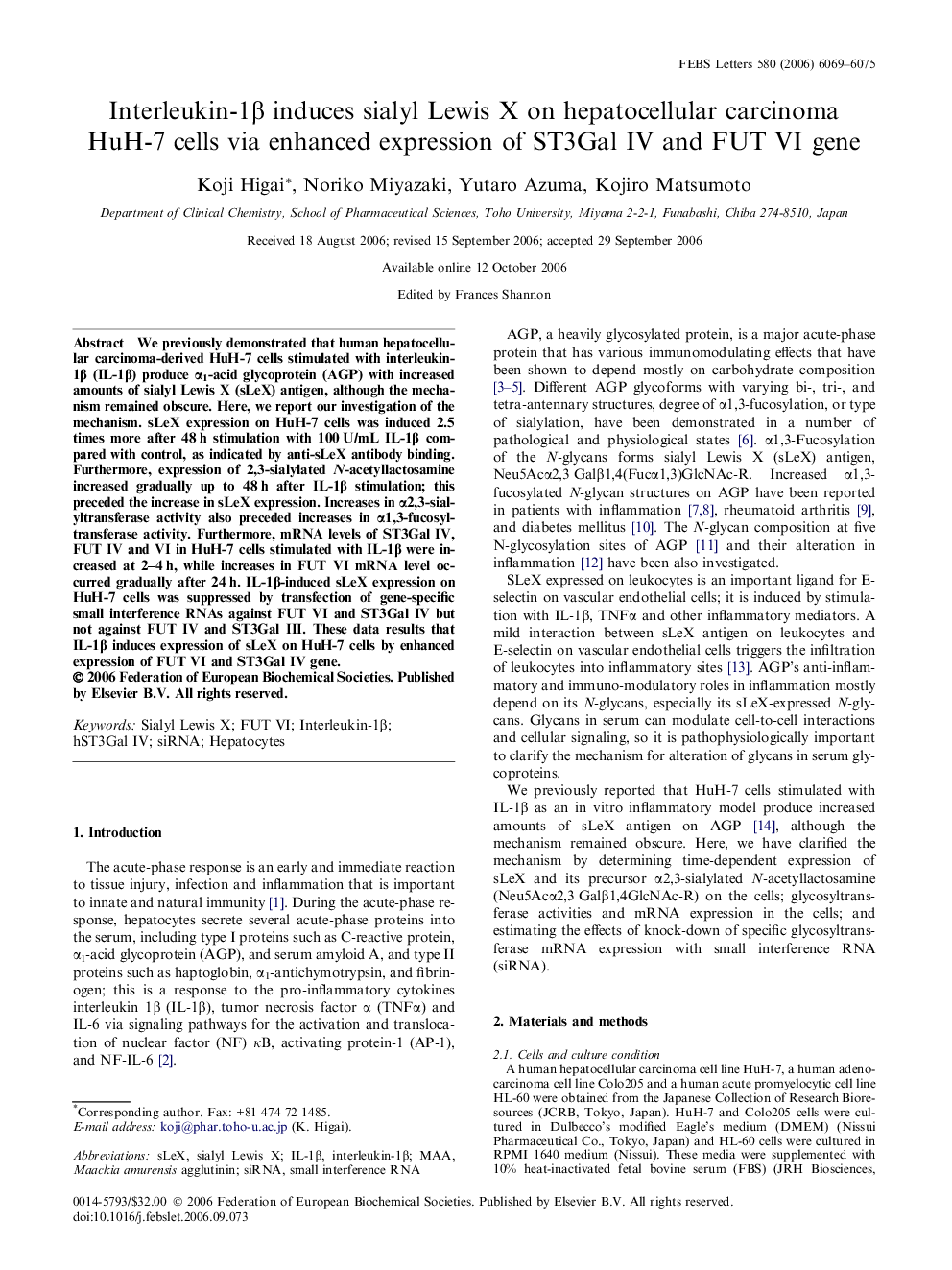| Article ID | Journal | Published Year | Pages | File Type |
|---|---|---|---|---|
| 2052089 | FEBS Letters | 2006 | 7 Pages |
We previously demonstrated that human hepatocellular carcinoma-derived HuH-7 cells stimulated with interleukin-1β (IL-1β) produce α1-acid glycoprotein (AGP) with increased amounts of sialyl Lewis X (sLeX) antigen, although the mechanism remained obscure. Here, we report our investigation of the mechanism. sLeX expression on HuH-7 cells was induced 2.5 times more after 48 h stimulation with 100 U/mL IL-1β compared with control, as indicated by anti-sLeX antibody binding. Furthermore, expression of 2,3-sialylated N-acetyllactosamine increased gradually up to 48 h after IL-1β stimulation; this preceded the increase in sLeX expression. Increases in α2,3-sialyltransferase activity also preceded increases in α1,3-fucosyltransferase activity. Furthermore, mRNA levels of ST3Gal IV, FUT IV and VI in HuH-7 cells stimulated with IL-1β were increased at 2–4 h, while increases in FUT VI mRNA level occurred gradually after 24 h. IL-1β-induced sLeX expression on HuH-7 cells was suppressed by transfection of gene-specific small interference RNAs against FUT VI and ST3Gal IV but not against FUT IV and ST3Gal III. These data results that IL-1β induces expression of sLeX on HuH-7 cells by enhanced expression of FUT VI and ST3Gal IV gene.
